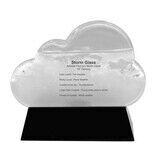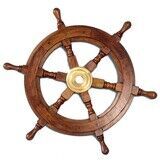| Main Category: OUTLET |
| Producer: Nauticalia |
| Supplier: Nauticalia |
| Unit: pcs |
| Product Description: |
Produced in association with the National Maritime Museum, Greenwich, this is a complete reference book that includes knots, turns, bends and hitches together with decorative knots, plaits, sennits and mats. Full explanations are given of the different types of rope construction, with over 250 entries and as many step-by-step illustrations. A complete hands-on guide and a must for both sailor and angler, in addition to being an invaluable and handy volume for the macramé practitioner as well as those being introduced to the subject. Comes complete with 4 lengths of quality practice rope to help master the techniques to tie the perfect knot. Not suitable for children under 3 years old.
See also |

STORM CLOUD, 13 cm
N7686
Price: 26.17 €

DECORATIVE SHIP`S WHEEL, 45 cm
GFT-WHEEL45
Price: 46.90 €
|
| « Continue shopping |